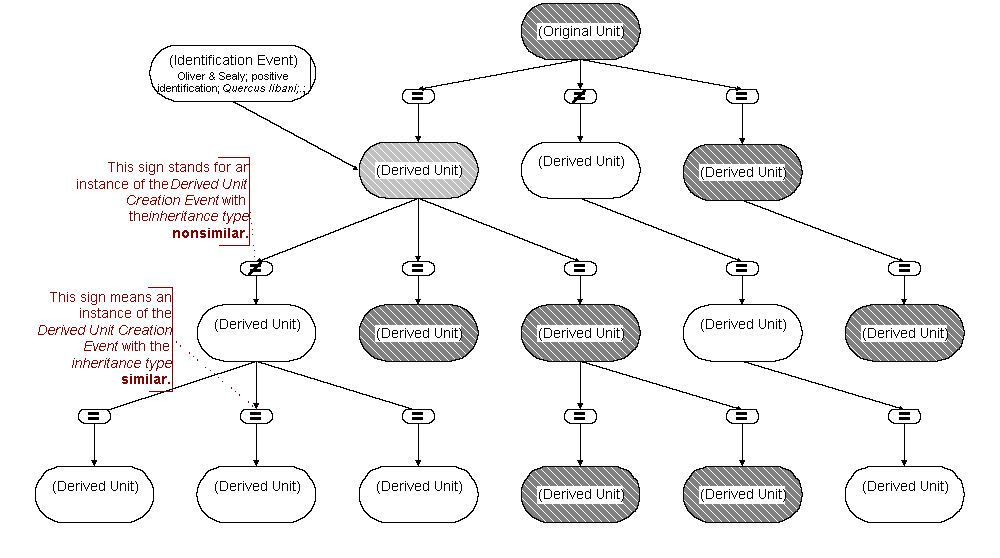Every unit may have various identifications, of which the latest one is singled out to be the currently accepted or preferred identification. This is the one normally shown in output, if the identification history of the unit has not explicitly been asked for by the user.
However, implementation of the preferred identification cannot be restricted to a single unit. As a result of the reflexive unit structure in the CDEFD model the instances may form a derived unit tree. An identification of a unit somewhere in this tree may be considered valid for the present unit. This is the case if all derived unit creation events between the present unit and the other one are of the inheritance type similar, which by definition denotes similarity as to the taxonomic identification. This implies that any identification of a unit may affect other units, and that a preferred identification may have to be extended to cover other units as well.
To handle such units they are considered to belong to a Similar Unit Set (SUS), which is defined as the partial instance-level unit tree composed only by units linked by derived unit creation events of the inheritance type similar. Within the SUS, all preferred identifications should be the same. Every unit is member of exactly one SUS and every SUS consists of one or more units.
Because a unit does not necessarily have a preferred (or any) identification, it is necessary to traverse the partial tree representing the current SUS to come to an identification. To avoid complex and time-intensive traversing algorithms for non-binary trees, the placing of a unit in a specific SUS is indicated by an attribute of the unit itself. The value for this attribute is either inherited from the parent unit or (if the inheritance type of the creation event is not similar) has to be generated by the system. Preferably, its value should be that of the ID of the topmost unit in the SUS partial tree forming the SUS. This has the advantages of implicit uniqueness of SUS-identifiers and to provide a starting point in cases were it is necessary to traverse the tree (Hagedorn, pers. comm.).

The Instance Diagram (Rumbaugh 1991, adapted) shows a sample of the instance-level unit tree that can be generated from the diagram "Derived unit creation event" (see Berendsohn & al., this volume). The oval shapes depict instances of the entity types. The name of the entity type is given in parentheses, optionally followed by attribute values. A vertical bar indicates that attributes from related entities have been included. The connecting lines represent instances of relationships. The smaller ovals stand for instances of the Derived Unit Creation Event, either of the inheritance type similar (=) or not similar (). One of the SUS's present is singled out by hatching. The depicted identification event refers to all members of that set.